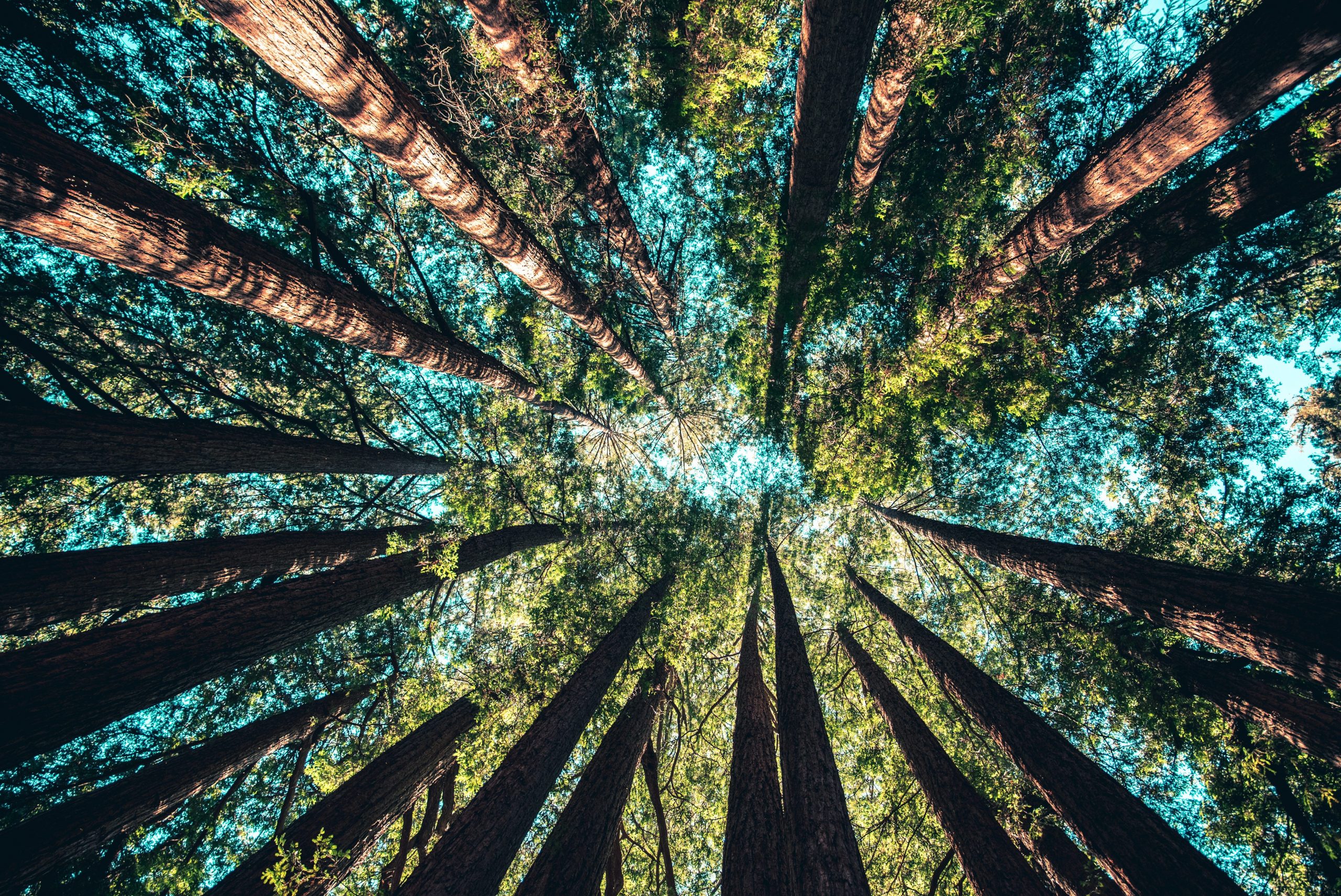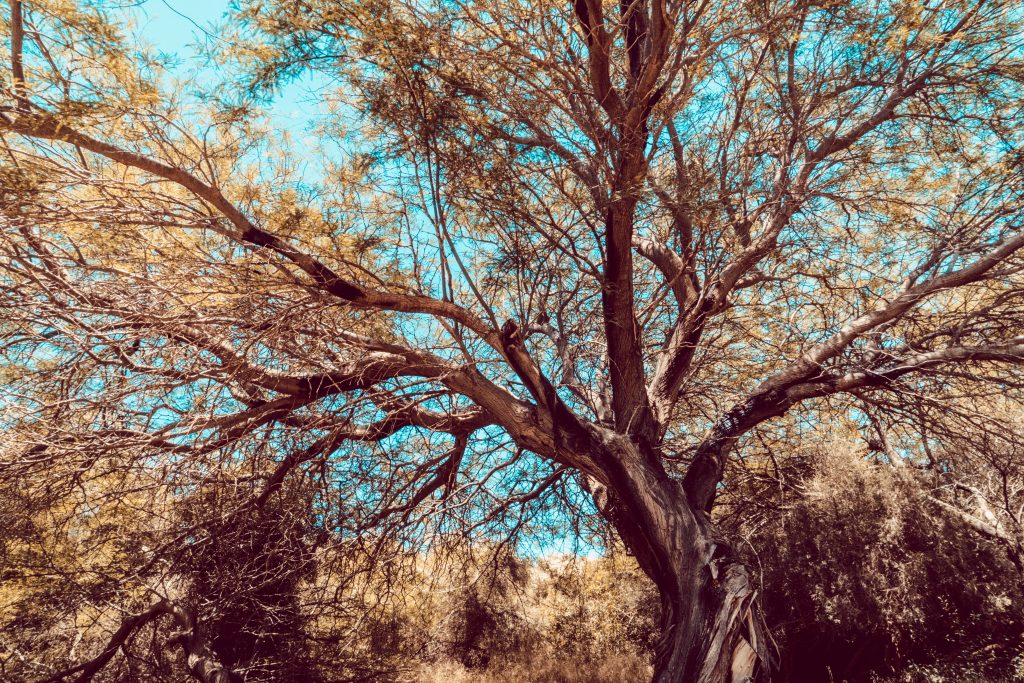Make Forests Resilient Again
August 22, 2021With climate change warnings reaching unprecedented new levels, how will our forests cope? A new study reveals how effective Israeli forests are in sequestering carbon from the atmosphere and what needs to be done to improve their resiliency to the climate crisis.
In the midst of a prolonged heatwave with temperatures reaching 40°C (104°F), an enormous forest fire raged this past July in Cyprus leaving behind a grim, vast landscape of grey, charred soil and blackened lifeless trees. Perhaps the country’s largest fire since 1974, more than 50 square kilometers (12,355 acres) were engulfed in flames consuming forests, farmland, powerlines, and fifty residential homes. As well, four people perished during the event.
But this is by no means an isolated incident. By the end of last year, California experienced its worst and most destructive wildfire season to date with close to 10,000 separate incidents that burned a cumulative estimated total of more than 4.2 million acres, damaged or destroyed over 10,000 structures and buildings, and killed 33 people––a series of disasters that resulted in over $12 billion in property damage and fire suspension costs. More than eight months into 2021, California has already experienced over 6,000 incidents that have burned nearly 580,000 acres and damaged or destroyed 400 structures and buildings.
Last year’s infamous Australian bushfire whose intensity peaked between December 2019 and January 2020 was even worse. By the following March, 46 million acres were burnt, more than 5,900 building including 2,700+ residential homes were destroyed, and 479 people were killed (34 directly and 445 indirectly via smoke inhalation)––not to mention the billions of animals that either perished or became displaced.
The degree to which these events are dismantling forests and killing trees is alarming considering how crucial they are in sequestering CO₂ from the atmosphere, the most abundantly emitted greenhouse gas (GHG) that has put our climate in its current crisis. While these forest fire incidents may have been started by either lightning or intentional/accidental arson, scientists agree that extreme climate conditions are to blame for their fast spread and intensity. Even in Israel, forests are routinely threatened by climate-exacerbated fires, droughts, and heatwaves.
Presented at the recent 49th Annual Conference organized by the Israel Society for Ecology and Environmental Science (ISEES) and funded by the Jewish National Fund (JNF), a new Israeli study focuses on the extent to which Israeli forests mitigate the regional effects and rate of climate change.
Storing and Absorbing

The destruction of forests and plant life are rendering them less effective as carbon sinks, natural areas capable of absorbing atmospheric carbon from anthropogenic carbon sources, namely fossil fuels. According to the 2020 Global Carbon Budget, forests in particular absorb nearly a third of all CO₂ emissions each year, approximately 12.5 billion tons of CO₂ annually. One of the most critical carbon sinks is the Amazon Rainforest, which alone absorbs 25% of all the carbon sequestered by forests around the world each year. But between the intense ongoing logging operations, man-made fires, and dwindling levels of vital soil nutrients, its capacity to store carbon is beginning to plummet. In fact, overall deforestation has claimed more than 510,000 square kilometers (>123 million acres) of the rainforest, an area on par with the size of Spain.
“It should be noted that not all of the carbon dioxide that gets absorbed will remain in the plant forever. Most of it will soon return to the atmosphere,” explains Prof. Jose Grinzweig of Hebrew University’s Department of Agriculture, Food, and Environment. This is one of the reasons why wildfires are so problematic because they prompt a very sudden and enormous release of CO₂ all at once. In the case of the Australian bushfires, a whopping 400 million tons of CO₂ were estimated to have been emitted into the atmosphere.
For the past twenty years, Prof Dan Yakir of the Weizmann Institute has collected a wealth of air measurement data from various forests in Israel, especially from the Yatir Forest in the northern Negev and the Birya Forest in the Galilee. By monitoring the CO₂ concentrations moving into the forest and comparing them to the concentrations leaving the forest over an entire year, the new study was able to quantify amount of carbon captured by forest’s trees, soil, and vegetation.
After analyzing the data collected by Yakir and others, Grinzweig calculated the estimated amount of carbon the entire forested area in Israel captured on a per year basis.
In Israel, forests make up just over 7% of the country, and according to the Grinzweig’s findings, Israel’s northern forests capture more carbon than its southern ones due to the greater precipitation they receive and thus the faster rates of growth they experience over the course of a year.
“The forests and groves in Israel together capture a total amount of 0.18-0.54 million tons of CO₂ per year, which makes up 1-3% of all greenhouse gases emitted from anthropogenic sources in Israel (as of 2014),” he says Grinzweig.
Although the carbon sequestration percentages are small compared to Israel’s overall greenhouse gas emissions, JNF’s chief scientist, Dr. Doron Merkel, asserts forests’ integral role in slowing climate change. “Forests are still humanity’s main tool for atmospheric carbon fixation,” he says.
Grinzwig’s research is ongoing, and he is currently working to determine how long carbon remains trapped in forest soils and what the total carbon storage potential is in Israel’s forests and groves. “These are significant, unresolved questions so the importance of this study is grand,” says Merkel.
Forest vs. Desert

For Israeli forests to continue to capture and store carbon long term, the forests and groves must be kept healthy and active––a task that will become increasingly challenging in the coming years. According to the Ministry of Environmental Protection’s forecast from 2018 temperatures in Israel are expected to climb 1.5-3°C in the winters and 1.5-4°C in the summer by the end of the 21st century. In addition, precipitation is projected to decrease anywhere from 10-20% as the frequency of heatwaves, droughts, and windstorms rise threatening the integrity of Israel’s forests even further.
To make matters worse, these shifts in weather patterns are expected to intensify the desertification phenomenon.
“The desert area in Israel is expected to grow and expand to the north. The summers will be longer, and the winters will be shorter,” explains Aviv Eisenband, Director of JNF’s Forestry and Professional Development Department.
However, forests located along the desert border can actually slow desert expansion into northern Israel and even improve air quality. “A forest produces shade, moderates the temperature and humidity in its surroundings, and prevents the soil from drifting,” Eisenband adds.
Time to Intervene

While it may sound contradictory, one key strategy to preserve Israel’s forests and their carbon capturing capacities is actually to cut back the number of trees.
“A forest is not something that can be planted absent-mindedly and forgotten. Forests need care and maintenance such as periodic thinning, which enables trees to optimally grow and develop without being subject to too much competition for sunlight,” says Eisenband. In fact, according to a 2019 collaborative study between the Weizmann Institute and the JNF, the carbon fixation rate of trees in low density forest plots were found to be higher and those in high density forest plots. In addition to the larger tree trunk diameters measured in the thinned plots compared to those in the dense plots, the researchers also found that the needles of pine trees were longer—a clear sign of increased rates of carbon fixation.
“We have seen that the reason for the increased growth in the thinned plots is because they do not have neighboring trees that shade them. Thus, they are exposed to sunlight for longer durations throughout the day, which is why they can perform increased photosynthesis and sequester more carbon,” says Dr. Tamir Klein of Weizmann Institute’s Department of Plant and Environmental Sciences.
Another step taken by JNF personnel is to select trees that are more resistant to drought, diseases, and pests. For example, after the Yatir Forest suffered through two consecutive drought events, eight of the trees that survived were identified and used for propagation.
To facilitate more robust forests, the JNF is also overseeing the formations of special ground developments that would better regulate the speed and of flow of flood water, to increase its infiltration into the soil. Doing so would provide vegetation in relatively arid conditions more water that they would otherwise not receive.
With climate change warnings growing more and more worrisome, we are nearing our last chances to act on our appreciation for the environment. Some climate experts have even gone as far to say that some climatic changes are now either inevitable or irreversible. If we are to achieve some semblance of normality heading into the not-too-distant future, we need to start taking better care of our forests so that they too can take better care of us.
This ZAVIT Article was also published in YNET News on 21 Aug. 2021







